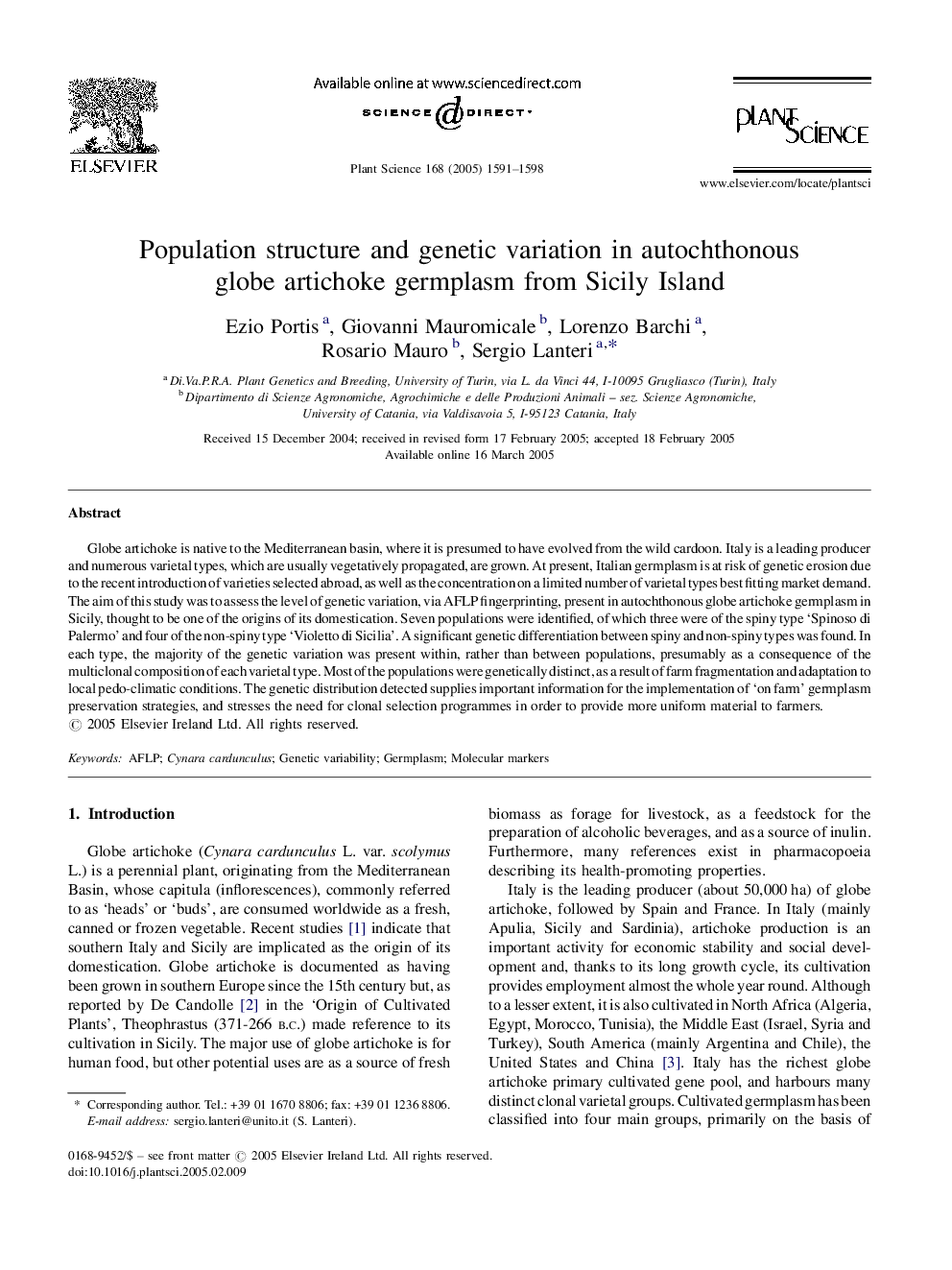| Article ID | Journal | Published Year | Pages | File Type |
|---|---|---|---|---|
| 10841085 | Plant Science | 2005 | 8 Pages |
Abstract
Globe artichoke is native to the Mediterranean basin, where it is presumed to have evolved from the wild cardoon. Italy is a leading producer and numerous varietal types, which are usually vegetatively propagated, are grown. At present, Italian germplasm is at risk of genetic erosion due to the recent introduction of varieties selected abroad, as well as the concentration on a limited number of varietal types best fitting market demand. The aim of this study was to assess the level of genetic variation, via AFLP fingerprinting, present in autochthonous globe artichoke germplasm in Sicily, thought to be one of the origins of its domestication. Seven populations were identified, of which three were of the spiny type 'Spinoso di Palermo' and four of the non-spiny type 'Violetto di Sicilia'. A significant genetic differentiation between spiny and non-spiny types was found. In each type, the majority of the genetic variation was present within, rather than between populations, presumably as a consequence of the multiclonal composition of each varietal type. Most of the populations were genetically distinct, as a result of farm fragmentation and adaptation to local pedo-climatic conditions. The genetic distribution detected supplies important information for the implementation of 'on farm' germplasm preservation strategies, and stresses the need for clonal selection programmes in order to provide more uniform material to farmers.
Related Topics
Life Sciences
Agricultural and Biological Sciences
Plant Science
Authors
Ezio Portis, Giovanni Mauromicale, Lorenzo Barchi, Rosario Mauro, Sergio Lanteri,
